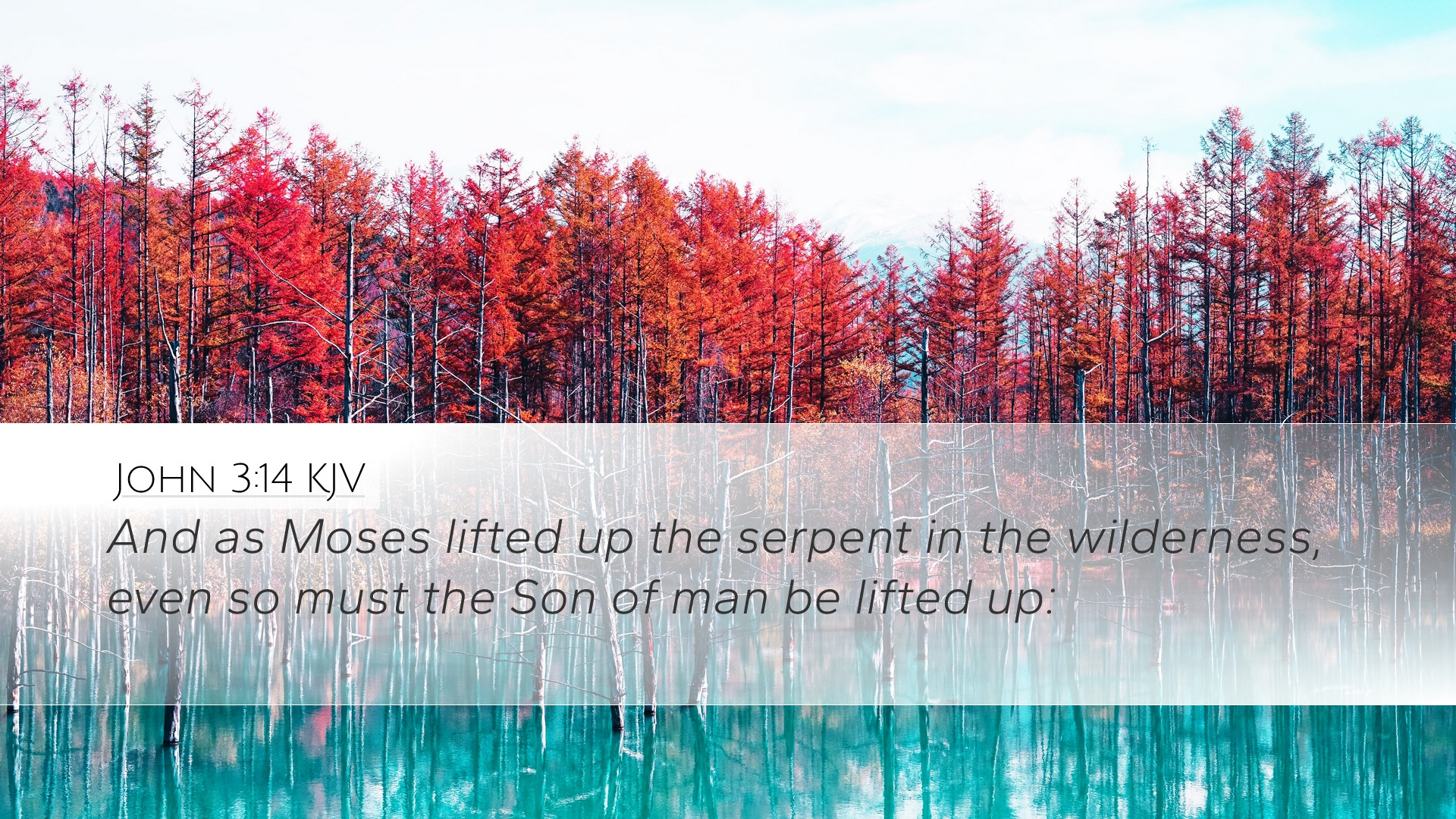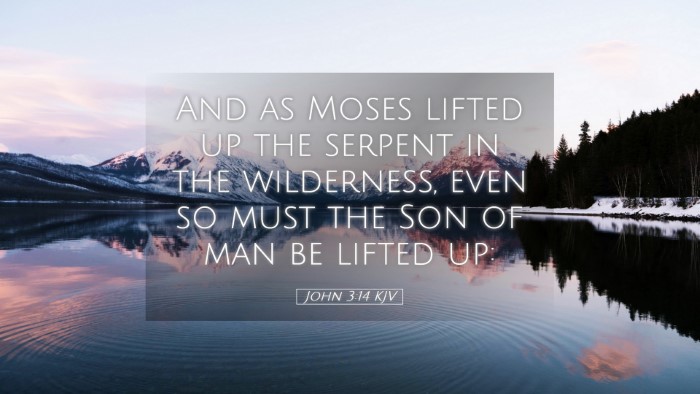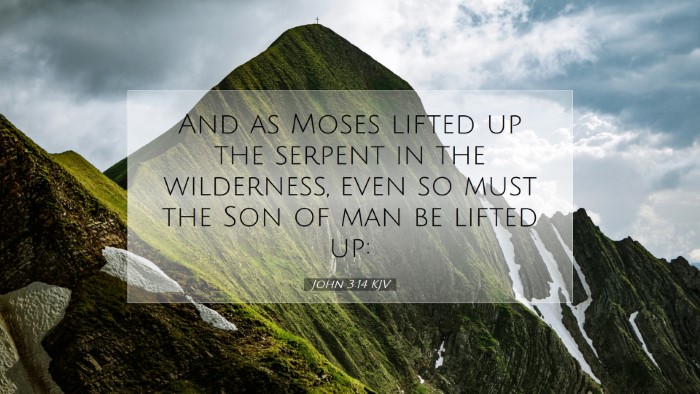Commentary on John 3:14
John 3:14 states, "And as Moses lifted up the serpent in the wilderness, even so must the Son of Man be lifted up." This verse is significant both in its historical context and theological implications. It draws a parallel between the event from the Old Testament and the redemptive work of Christ, serving as a pivotal point in understanding Jesus’ ministry and sacrifice.
Contextual Analysis
This passage occurs within the broader narrative of Jesus' conversation with Nicodemus, a Pharisee who seeks understanding of Jesus’ teachings. In John 3:14, Jesus references a pivotal event in Israel's history found in Numbers 21:4-9, where the Israelites, afflicted by venomous serpents due to their rebellion, were healed by looking at a brass serpent that Moses raised on a pole.
- Moses and the Serpent: The incident emphasizes faith and recognition of God's provision for salvation amidst judgment.
- Parallel to Christ's Crucifixion: Just as the Israelites looked upon the serpent and were saved from physical death, so too will all who look to Christ in faith be saved from spiritual death.
Theological Insights
Commentators such as Matthew Henry and Adam Clarke highlight the profound theological implications of being "lifted up." This concept refers not only to Jesus' crucifixion but encompasses His exaltation and glorification.
Matthew Henry's Perspective
Matthew Henry notes that the lifting up of Christ signifies both His crucifixion and His ascension. He writes, "When he is lifted up upon the cross, he shall draw all men unto himself." This universal attraction to Christ points to the inclusive scope of the Gospel.
Albert Barnes' Insights
Albert Barnes elaborates on the comparison between the serpent and Christ, indicating that both serve as instruments of divine mercy in the face of human sinfulness. The serpent, though it was a symbol of judgment, became a means of healing. In the same manner, Christ, who bore our sins and judgment, becomes our means of salvation.
Adam Clarke's Commentary
Adam Clarke emphasizes the concept of faith in this process. He states, "the looking to the serpents required an act of faith." He draws a parallel to the necessity of faith in coming to Christ. Just as the afflicted Israelites had to look and believe that they would be healed, so modern believers must look to Christ and accept Him for their spiritual healing and salvation.
Applications for Pastors and Theologians
This verse serves as both a reminder of the centrality of the crucifixion in Christian teaching and a source of comfort. It urges pastors to communicate the importance of faith in Christ as the key to salvation.
- Evangelistic Focus: The necessity of proclaiming Jesus as the Savior who is “lifted up” invites believers to share the message that salvation is available to all.
- Understanding Redemption: Teaching about the parallels between the Old Testament and New Testament helps congregants grasp the unity of Scripture and the continuity of God’s plan for humanity.
- Encouragement in Trials: This verse encourages those who are experiencing suffering or struggle to look to Christ, who understands and has overcome the world.
Conclusion
John 3:14 stands as a profound testament to the saving love of Christ, drawing on historical events to elucidate His role in salvation. By examining the insights from Henry, Barnes, and Clarke, we see how this one verse encapsulates a larger narrative of redemption found throughout the Scriptures. For pastors, students, and theologians, it offers a rich vein of truth to mine for preaching, teaching, and personal reflection.


